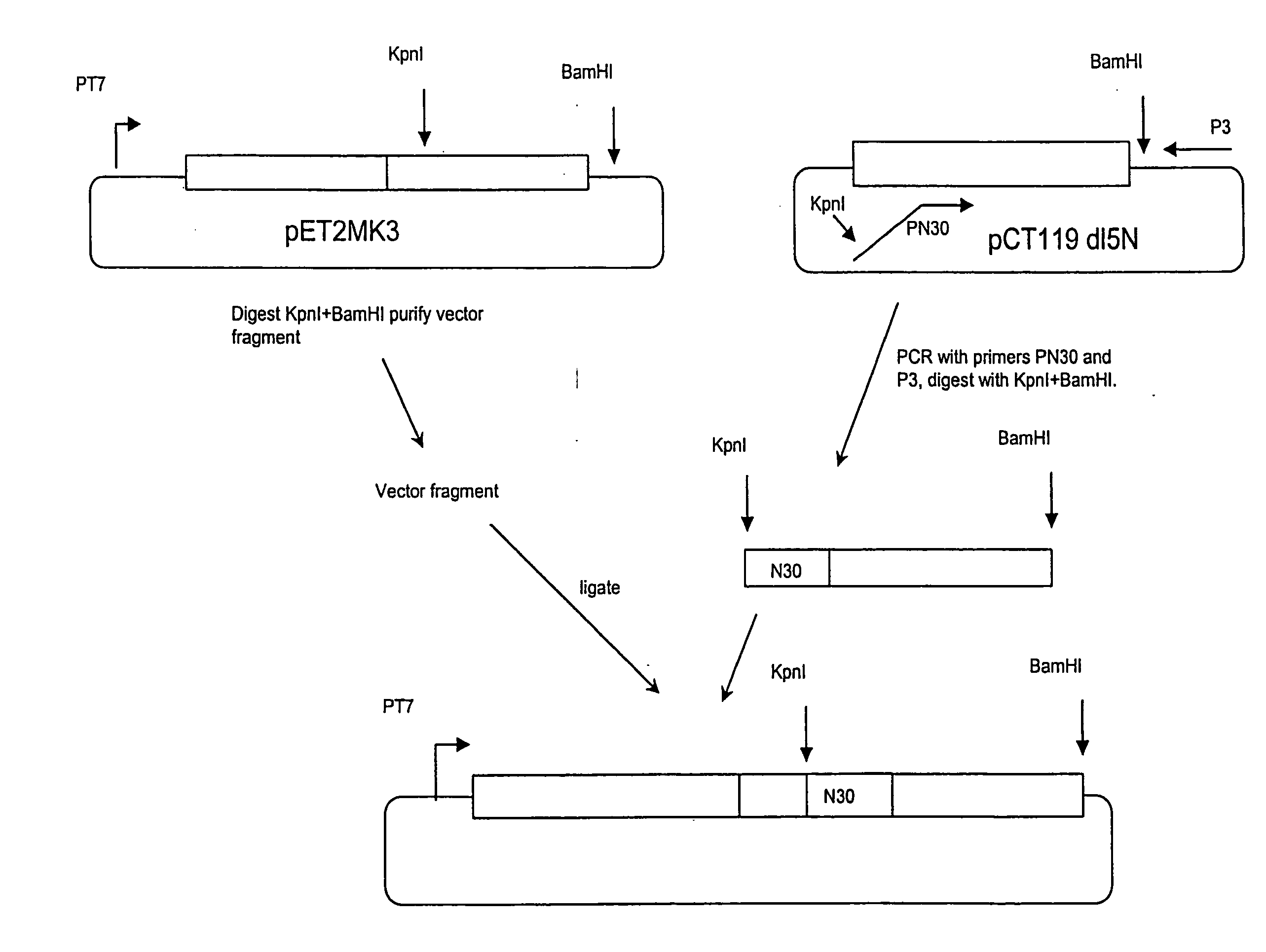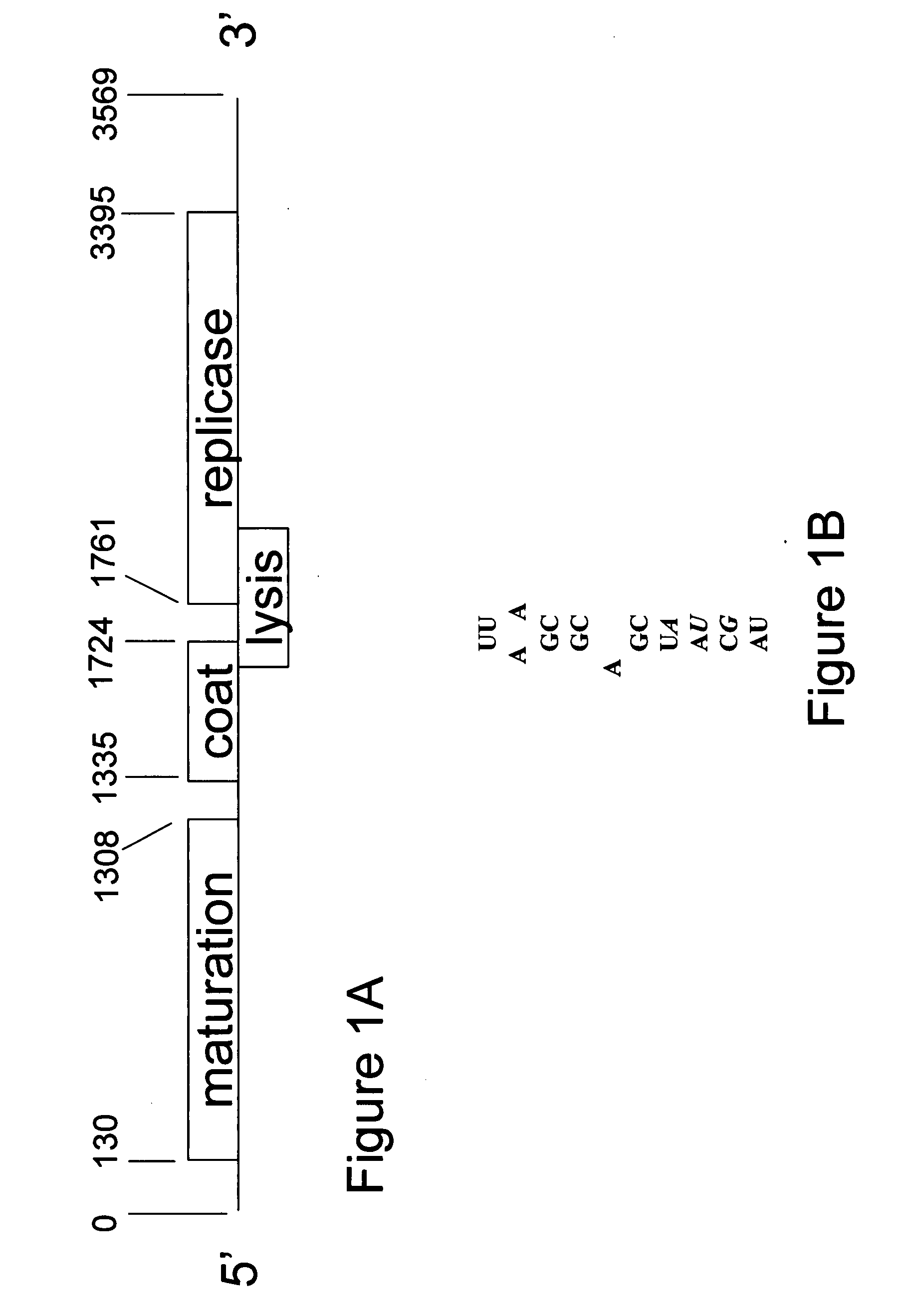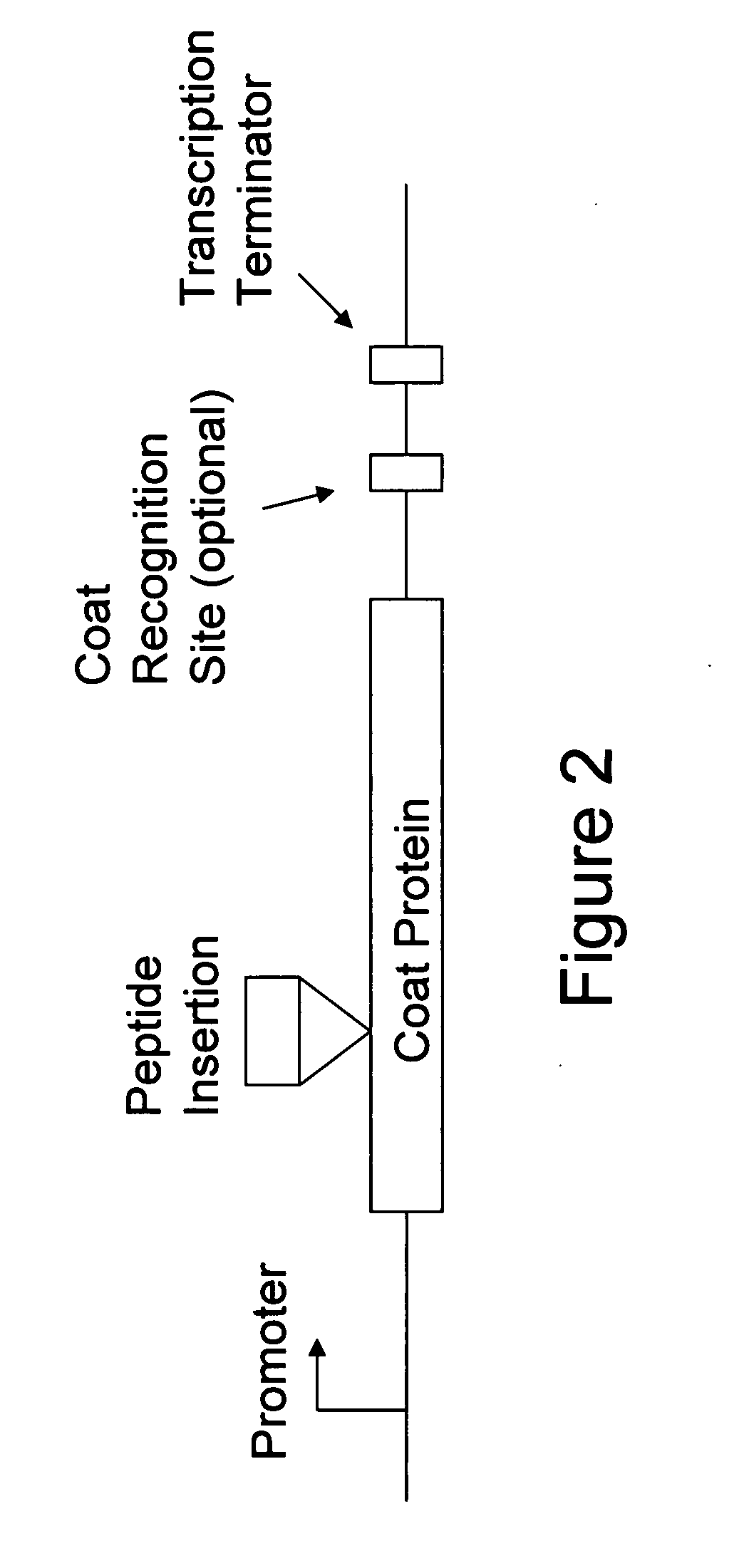Virus-like platform for rapid vaccine discovery
a technology of virus-like particles and vaccines, applied in the field of virus-like particles, can solve the problem of restricted display of certain peptides
- Summary
- Abstract
- Description
- Claims
- Application Information
AI Technical Summary
Benefits of technology
Problems solved by technology
Method used
Image
Examples
example 1
In Vitro Expression of MS2 Coat Protein
[0099]Extracts of E. coli cells capable of carrying out transcription and translation in vitro were described more than 30 years ago [Zubay G., 1973, Annu Rev Genet 7: 267-87], but recent improvements have greatly increased their ability to produce useful quantities of product (see Kramer et al., Cell-free coupled transcription-translation systems from E. coli, In.: Protein Expression. A Practical Approach, Higgins and Hames (eds.), Oxford University Press (1999) for example). Originally, these systems relied on the presence of endogenous E. coli RNA polymerase to transcribe genes from relatively weak promoters, and it was necessary to utilize the incorporation of radioactive amino acids even to detect the relatively low-level of protein they typically synthesized. Modern systems use bacteriophage T7 (or a related) RNA polymerase to direct the high-level transcription of genes cloned under control of a T7 promoter in systems optimized to effici...
example 2
Development of MS2 VLP Display
A-B Loop Insertion
[0100]The AB-loop is a 3-residue turn connecting coat protein's A and B beta-strands (FIG. 8). Peptides inserted here are highly accessible and, because they are tethered at both ends, conformationally constrained. Since many epitopes in their native environments are found in surface loops, this is a natural location for peptide display. Capsid geometry dictates that the AB-loop is encountered at regular intervals of roughly 30 angstroms, so peptides inserted here form dense repetitive arrays. Efforts to produce active AB-loop insertions have met with mixed success [Stockley et al., 2000, Methods Enzymol 326:551-569]. In some cases, insertions were tolerated, but when they were not, the protein failed to fold correctly and either aggregated in inclusion bodies or was proteolyically degraded. In the instant example, a solution is described.
[0101]Two examples are presented to illustrate the point. First, to facilitate construction of ins...
example 3
Immunogenic Display of Diverse Peptides on Virus-Like Particles of RNA Bacteriophage MS2
[0106]In the instant example, a platform is described for vaccine development based on the VLPs of RNA bacteriophage MS2. It serves for the engineered display of specific peptide sequences, but also allows the construction of random peptide libraries from which specific binding activities can be recovered by affinity selection. Peptides representing the V3 loop of HIV gp120 and the ECL2 loop of the HIV coreceptor, CCR5, were inserted into a surface loop of MS2 coat protein. Both insertions disrupted coat protein folding and VLP assembly, but these defects were efficiently suppressed by genetically fusing coat protein's two identical polypeptides into a single-chain dimer. The resulting VLPs displayed the V3 and ECL2 peptides on their surfaces where they showed the potent immunogenicity that is the hallmark of VLP-displayed antigens. Experiments with random-sequence peptide libraries show the sing...
PUM
| Property | Measurement | Unit |
|---|---|---|
| internal diameter | aaaaa | aaaaa |
| pH | aaaaa | aaaaa |
| density | aaaaa | aaaaa |
Abstract
Description
Claims
Application Information
 Login to View More
Login to View More - R&D
- Intellectual Property
- Life Sciences
- Materials
- Tech Scout
- Unparalleled Data Quality
- Higher Quality Content
- 60% Fewer Hallucinations
Browse by: Latest US Patents, China's latest patents, Technical Efficacy Thesaurus, Application Domain, Technology Topic, Popular Technical Reports.
© 2025 PatSnap. All rights reserved.Legal|Privacy policy|Modern Slavery Act Transparency Statement|Sitemap|About US| Contact US: help@patsnap.com



